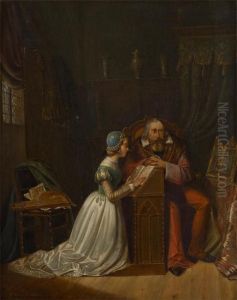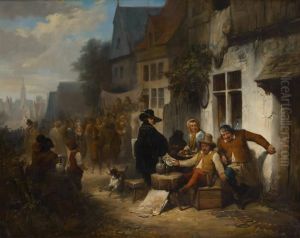Firmin Gaston Bouvy Paintings
Firmin Gaston Bouvy was a French artist, born in 1856 and passing away in 1943, whose work has garnered attention for its contribution to the late 19th and early 20th-century art movements in France. Bouvy's artistic journey was marked by a dedicated exploration of various mediums, including painting, drawing, and printmaking. His work, while not as widely recognized as some of his contemporaries, reflects the broader trends and stylistic shifts that characterized the vibrant art scene of his time.
Bouvy's early life was rooted in an environment steeped in artistic tradition. He received his initial training at local art schools, where he was exposed to the fundamental techniques and theories that would underpin his later work. As he matured as an artist, Bouvy found himself increasingly drawn to the Impressionist movement, which was gaining momentum in France during his formative years. His artworks from this period exhibit a keen sensitivity to light and color, hallmarks of Impressionist influence.
Throughout his career, Bouvy maintained a dedication to capturing the essence of his subjects, whether through the lush landscapes of the French countryside or the dynamic scenes of urban life. His ability to evoke mood and atmosphere through his choice of palette and brushwork garnered him a respected place among his peers. Despite this, Bouvy often operated on the periphery of the major art movements of his time, forging a path that was distinctly his own rather than seeking the spotlight of the Parisian art scene.
Bouvy's later years were marked by a continued evolution of his style, as he experimented with more abstract forms and compositions, reflecting the shifting artistic sensibilities of the early 20th century. His contributions to the art world were recognized in his time through various exhibitions and salons, where his work was both exhibited and critically acclaimed.
Firmin Gaston Bouvy's legacy, while perhaps not as conspicuous as that of some of his contemporaries, is embodied in his dedication to the exploration and expression of beauty in its myriad forms. His work remains a testament to the rich tapestry of French art history, offering insights into the nuanced transitions that defined the period between Impressionism and Modernism. Bouvy died in 1943, leaving behind a body of work that continues to be studied and appreciated for its unique place within the broader narrative of art history.

